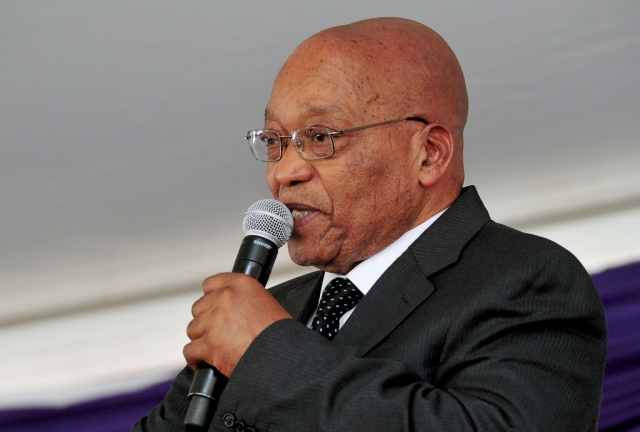President Jacob Zuma’s latest cabinet reshuffle is deepening the troubles of the ANC and could be the prelude to the eventual breakup of the tripartite alliance of the ANC, COSATU and the SACP.
Zuma reshuffled his cabinet for the second time in six months on Tuesday. While he made six changes to the executive, it was basically done to achieve two aims: the first is to consolidate his hold on all leading positions in government. The second is to push through a corrupt nuclear power building program that he is pursuing with Russia.
The latest move by Zuma is another salvo being fired in the factional war in the ANC. The party is polarized and the centre collapsed a long time ago. What we are now witnessing is a fast-paced race to the bottom where every move the factions make has the effect of widening the divisions and tearing the organisation apart.
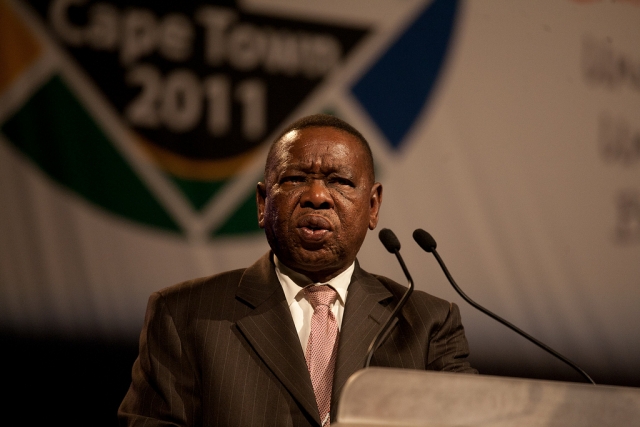 Blade Nzimande / Photo: GovernmentZA, Flickr
Blade Nzimande / Photo: GovernmentZA, Flickr
The move to fire Blade Nzimande, the General Secretary of the SACP, as Higher Education Minister, is intended to strike a blow at the opposite faction led by former miner-leader-now-big-capitalist Cyril Ramaphosa. It comes six months after the dramatic midnight reshuffle, in which Zuma got rid of key members of the Ramaphosa faction. In other words, the aim of this move is to consolidate his hold on power. He has done this in a very cunning way by appointing leading SACP member Buti Manamela as Deputy Minister of Higher Education. The aim is clearly to sow divisions in the Communist Party.
The SACP responded with the usual fire and brimstone, calling it “a declaration of war” but in the end decided to do nothing. The response was to call on Zuma to resign! This is the hallmark of this fight. Zuma is making all the moves, while the other faction is only reacting to them. The fear of splitting the ANC is paralysing them. In turn, this only emboldens Zuma, who as opposed to the other faction, has nothing to lose by going on the offensive. The result is a snowball effect of bigger and bigger crises.
The ruling class is in no position to move power away from the ANC at the current moment without provoking a mass movement that nobody will be able to control. They have leaned on the leaders of the ANC to hold back the masses for the last 25 years. Without a second party to move power to and with the crisis having undermined the ANC leaders, they are now desperately trying to hold on for as long as they can.
For Blade Nzimande it is clearly a case of the chickens coming home to roost. The SACP under Blade Nzimande has a primary role in the current crisis. Having defeated Thabo Mbeki at the 2007 Polokwane conference, under the pressure of a mass movement through the ANC, the leadership of the SACP betrayed the movement in 2009. While the masses were emboldened by the Polokwane victory, Zuma leaned on Nzimande and the SACP leaders to rein in the class struggle.
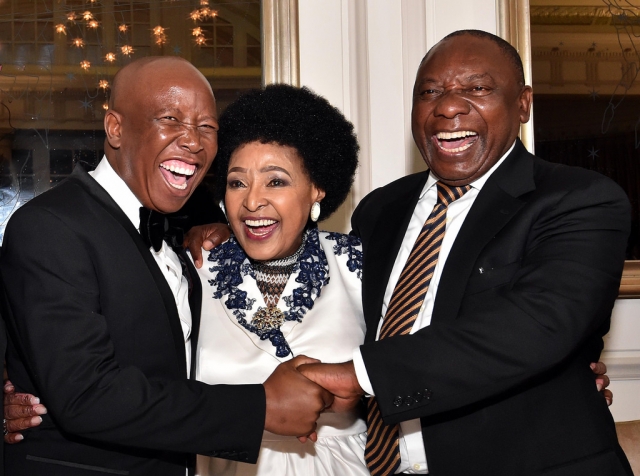 Cyril Ramaphosa (right) / Photo: GovernmentZA, Flickr
Cyril Ramaphosa (right) / Photo: GovernmentZA, Flickr
In 2009, after changing its constitution, the SACP leaders joined the Cabinet of Zuma to act as a left cover to Zuma’s capitalist agenda. Blade Nzimande, Jeremy Cronin and the rest of the SACP leaders faithfully carried out Zuma’s capitalist policies and became Zuma’s staunchest defenders. Nzimande even went so far as to propose a special law to protect Zuma from insults.
While the working-class went on the offensive in the period between 2009 to 2013 by embarking on waves of strikes, demonstrations and protests, the leadership worked to undermine the trade union movement. Blade Nzimande’s role of attacking NUMSA and the left wing of the trade union movement ultimately helped to split COSATU and the trade union movement. Even when the bourgeois state caused the massacre of workers at the Marikana mine in 2012, the so-called “communists” did nothing and remained comfortable in their cosy ministerial posts. Now they are facing the consequences.
The student movement of the last two years, which has erupted under the #FeesMustFall campaign, will not shed a single tear over Nzimande’s departure. As a “communist” minister he had a golden opportunity to put himself, and the SACP, at the head of the mass student movement that was fighting for free education. He could have mobilised the COSATU unions to support the students in their struggle by spreading the movement to the big factories, mines and working-class areas. Such a movement could have spread enormously and under the pressure of a mass movement under these conditions, the call for free education could have become a reality. This mass movement would not have stopped at the issue of free education. The authority of the SACP could have been revived and they could have taken the momentum forward and led the campaign to challenge the capitalist system itself. But the SACP leaders and Blade Nzimande have no intention of fighting for socialism. They have long ago abandoned any move in that direction. Now they are paying the price.
In their statement, the SACP described the cabinet reshuffle as “factional”. But the fact is that they belong to the same faction as Ramaphosa and his big business backers! By supporting Ramaphosa they are holding onto the apron strings of big business. In other words, they are key elements in the war between the two bourgeois factions in the ANC.
They also say the move is meant to bring the alliance to the “brink of disintegration”. But the truth is that the tripartite alliance exists in name only. It has long ago ceased to function as a political reality. The alliance has even ceased to operate as an organisational entity. The recent alliance secretariat meeting was an attempt to blow some life back into it. Now Zuma’s move will undo this. The usefulness of the SACP to act as a left cover has lost its shine a long time ago and the split in COSATU has severely weakened the labour federation. These two organisations can no longer secure the working-class support to the ANC in the way they did in the past. With large sections of workers now outside of the traditional congress movement, the leadership of the SACP have lost their authority and have now became dispensable to Zuma.
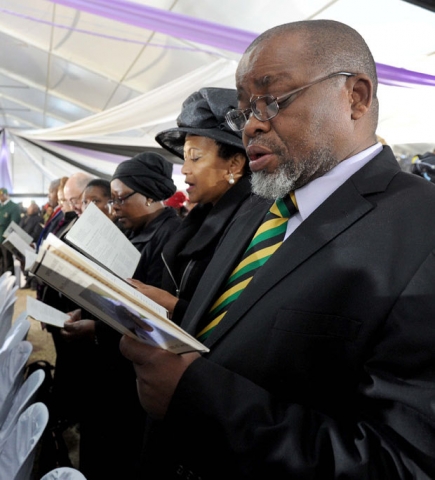 Gwede Mantashe / Photo: GovernmentZA, Flickr
Gwede Mantashe / Photo: GovernmentZA, Flickr
The move by Zuma will widen the divisions in the ANC even more and will prepare the ground for an eventual split of the party. ANC Secretary General, Gwede Mantashe, said the move will lead to further instability. Two months before the 54th Conference, the ANC is in dire straits. But there is very little hope of turning around its fortunes in the December conference. All the candidates represent different wings of the bourgeoisie and therefore cannot provide a way out. At this stage Zuma holds all the cards. If his faction wins then it will be clear that the traditional bourgeois wing has lost control of the ANC. This could provide the conditions for a split away for the big business faction around Ramaphosa. The ANC would then be propped up more by the rural provinces and the more backward elements of society. In the meantime, large sections of the working-class and the youth are now to the left of the ANC.
The move to shift David Mahlobo from the State Security Department to the ministry of Energy is an open attempt to push through a corrupt nuclear energy deal with Russia’s energy giant Rosatom before Zuma’s time in office runs out. Zuma has plans to build at least 10 nuclear power stations with a capacity of nearly 10,000 megawatts, with an estimated cost of more than 1 trillion rand. This would be one of the biggest nuclear deals anywhere in the world.
This proposal is mired in scandal. In anticipation of the deal, the Gupta family has even bought a uranium mine through all kinds of corrupt dealings. But recently this deal with Russia received a heavy blow when the Western Cape high court struck it down on procedural grounds. In addition, the outgoing energy minister, Mmamoloko Kubayi became a serious headache to Zuma by blocking moves to revive the deal. The appointment of Mahlobo, Zuma’s trusted right-hand man is intended to ram through the deal even at the cost of bankrupting the fiscus. The cost of this recklessness would be put on the shoulders of the working-class.
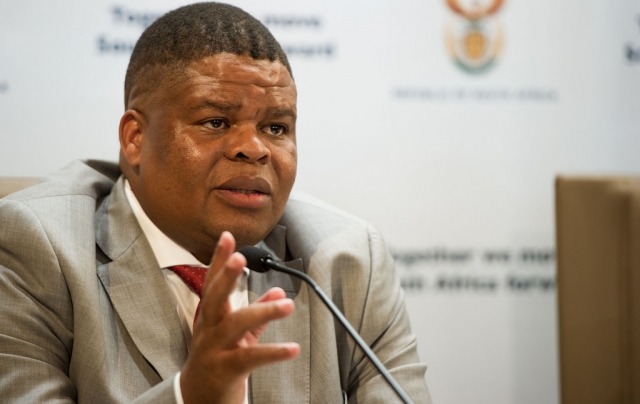 David Mahlobo / Photo: GCIS, Flickr
David Mahlobo / Photo: GCIS, Flickr
These events show the complete bankruptcy of the South African ruling elites. The constant infighting shows that they see no way out of the current crisis. Under the crisis of capitalism with its relentless pursuit of profit, they are stumbling from one scandal to the next. This is undermining their entire system. The Zuma wing of the ruling class is completely blinded by greed. Their outright looting of public resources has potential revolutionary consequences.
The big business section is fully aware of the political consequences but they are limited to do anything about it. Big Capital knows the revolutionary traditions of the South African working-class and are concerned about the political instability. All of this has clear consequences for the class struggle. When the working class moves again, there will be nothing to hold back the movement.

